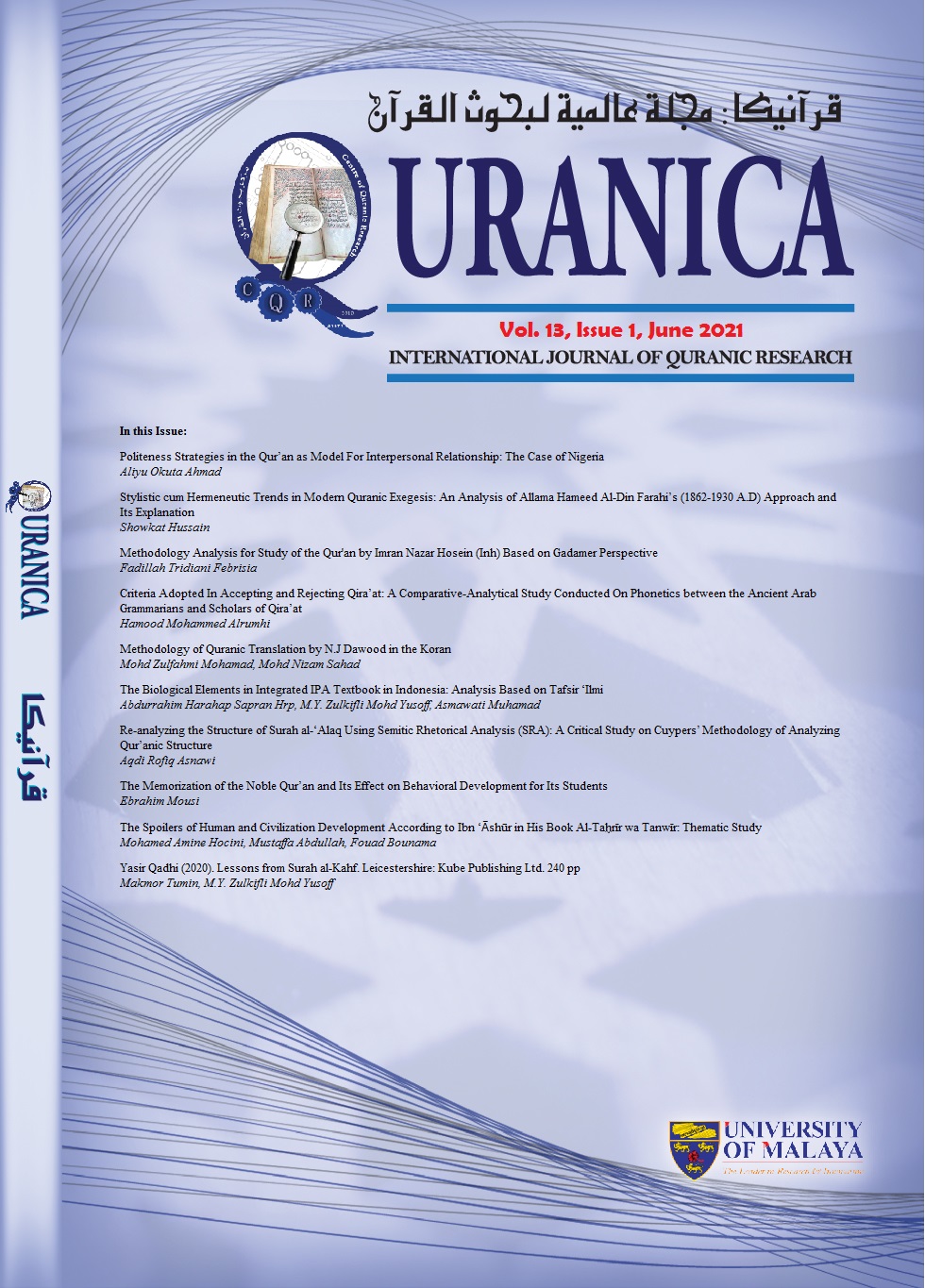Stylistic Cum Hermeneutic Trends In Modern Quranic Exegesis: An Analysis Of Allama Hameed Al-Din Farahi’s (1862-1930 A.D) Approach And Its Explanation
Main Article Content
Abstract
The eloquence and structure of the Quranic text exhibits cogent proofs indicating an extremely profound level of coherence (al-Nazm) which makes it a living miracle. The plan, format and thematic expression adds glamour to its linguistic style which also involve illuminating debates in interpretation of the text (Matan). The construction of the sentences in Quran, as such, is directly related to coherence, which is more difficult to achieve in oral, as opposed to written communication. The companions (Suhabah) knew as how and when the verses have been revealed and how they are to be related in its general particular context. The Surahs and Ayats in the book were arranged according to Prophetic instructions, maintaining the highest levels of revealed, linguistic as well as stylistic expressions. Consequently, the compilation of Quran (al-Jamawa al- Tadwin) followed a very exotic route based on the contextual, chronological and hermeneutic levels. And yet, not only does the Quran have coherence, but it exhibits a unique, sophisticated structure called the Semitic coherence that adds to its oral pedagogy and diction. Allama Hameed al-Din Farahi (1862-1930), a reputed exegist (Mufasir) from the subcontinent reflected over these stylistic aspects of Quran and explored linguistic and thematic components through his superb research. The present paper is an attempt to envision the stylistic and hermeneutic trends in the modern Quranic exegesis, with an objective of exploring Allama Farahi’s approach, his contribution to Quranic Studies and structural dimensions of his sensitive research.
Downloads
Article Details
Disclaimer
QURANICA makes every effort to ensure the accuracy of all its contents. However, opinions, discussions, views and recommendations are expressed in this journal do not necessarily reflect the official policy of QURANICA or views of its editors or publishers. Therefore, QURANICA and its publishers will not be liable for any controversy may be arisen. The journal reserves the right, at its sole discretion, to change its terms and conditions of publications.
Copyright
It is a condition of publication that manuscript submitted to the journal have not been published, accepted for publication, nor simultaneously submitted for publication elsewhere. By submitting a manuscript, the author(s) agrees that copyright for the article is transferred to the publisher, if and when the manuscript is accepted for publication.
